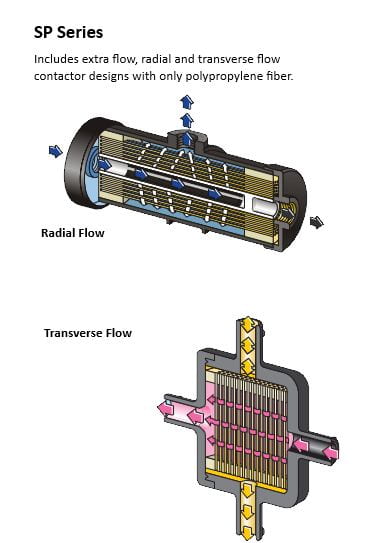From mutant superbugs to foul-smelling but helpful microbes, this week’s post will cover a truly blistering affair right in our own backyards that you might not have heard of!
Singapore’s water management policies and clean water supply seem to indicate that our water situation is fine and dandy. However, you might be surprised to learn that the unsafe release of toxic or volatile organic compounds (VOCs) into Singapore’s wastewater streams are a recurring and unfortunately common occurrence if these news articles[1][2][3] are any indication.
Among the offenders are licensed toxic industrial waste collectors (TIWCs) like NSL Oilchem and Cramoil that handle almost any hazardous waste under the sun, or at least they are supposed to. But before we point any fingers, consider this analogy: you are given a stew and told that you must extract every last drop of water out of it using your household equipment without burning or damaging any of the ingredients, or face a fine. Now imagine that some of the ingredients cannot be removed and can spontaneously combust!
This is the predicament that many TIWCs are in: dealing with highly varied liquors of various VOCs from industries. Many of these VOCs like alcohols, phenols and polyaromatic hydrocarbons seem impervious to municipal wastewater treatment technologies (Paxéus, 1996), requiring specialised equipment that these TIWCs have. Even so, once TIWCs have isolated highly concentrated liquors of VOCs from industrial wastewater, they have to find ways to store a highly flammable and varied VOC mixture with poor industrial reusability before disposal by incineration.
That is just an accident waiting to happen! Case and point, the 2017 ECO Special Waste Management fire was caused by mishandling of extracted hexane and dimethyl benzene (Xylenes) from industrial wastewater[4].

2017 ECO Special Waste Management facility on fire. (Photo by Mohamad Danial) Source: https://www.straitstimes.com/singapore/cause-of-tuas-plant-blaze-under-investigation
Instead, if we shift the onus of VOC wastewater to the point-source emitters: the industries in Singapore, this essentially kills two birds with one stone! Industries can recover isolated volatile reagents from their own wastewater and immediately reuse them without risky storage and handling; there is less wastewater sludge ash we have to landfill.

Burnt liquid hexane storage tanks, illustrating the risks of storage and handling VOCs. (Photo by Ministry of Manpower) Source: https://www.channelnewsasia.com/news/singapore/tuas-plant-fire-eco-special-waste-management-fined-mom-11848164
The proverbial silver bullet technology is a Membrane Contactor. It utilises liquid extraction principles (Anil Kumar Pabby, Syed S.H. Rizvi, 2015; B.W. Reed, M.J. Semmens, 1995) where a liquid extractant designed to have a high affinity to the desired product (VOC) draws the chemical away from wastewater through a porous hydrophobic membrane by diffusion. The extracted product can then be isolated from the designer extractant, and both the extractant and the product can be reused.
Sounds too good to be true? Industrial-grade membrane contactors are already on the market, like 3M’s Liqui-CelTM range here:
There are even cases industrial applications for the recovery of industrial reagents from wastewater (Anil Kumar Pabby, Syed S.H. Rizvi, 2015)! If KoSa Netherlands BV can find economic viability with such a system, I believe industries in Singapore should follow their lead. All it takes is for industries and the government to get their minds off maximum profits and economic growth, and think a little more of safety and environmental sustainability.
References:
Anil Kumar Pabby, Syed S.H. Rizvi, A. M. S. R. (2015). Handbook of Membrane Separations Chemical, Pharmaceutical, Food, and Biotechnological Applications (Second Edi). Taylor & Francis. ISBN 9781466555563
B.W. Reed, M.J. Semmens, E. L. C. (1995). Membrane Contactors. In S. A. S. R.D. Noble (Ed.), Membrane Separations Technology: Principles and Applications (pp. 467–496). Elsevier. ISBN 9780444816337
Paxéus, N. (1996). Organic pollutants in the effluents of large wastewater treatment plants in Sweden. Water Research. https://doi.org/10.1016/0043-1354(95)00278-2
[1] PUB media release on Cramoil repeat offence in 2018 for discharging hazardous VOCs – http://www.nas.gov.sg/archivesonline/data/pdfdoc/20180425010/PUB%20ISSUES%20STOP%20ORDER%20ON%20CRAMOIL%20SINGAPORE%20PTE%20LTD_press%20release%2025%20Apr%202018.pdf
[2] 38 firms charged with releasing dangerous substances and VOC in 2019 – https://www.straitstimes.com/singapore/health/illegal-discharge-into-sewers-38-firms-punished
[3] 5 firms charged with releasing prohibited VOC and heavy metals in 2018 – https://www.straitstimes.com/singapore/five-firms-fined-for-illegally-discharging-waste-into-public-sewers
[4] https://www.channelnewsasia.com/news/singapore/tuas-plant-fire-eco-special-waste-management-fined-mom-11848164
